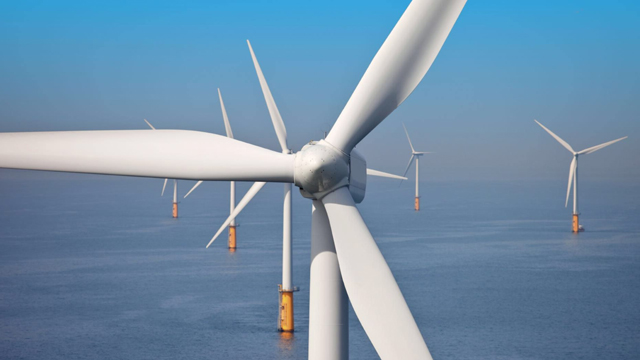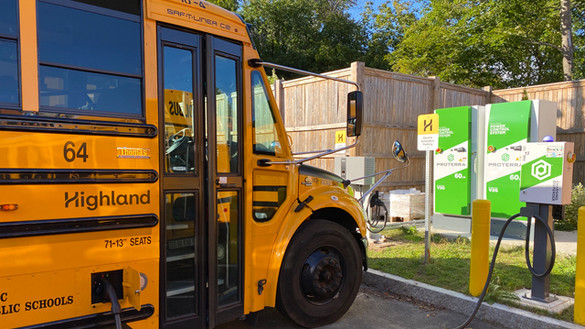
10 ways we're helping to reach net zero by 2050 in the US
Climate change is one of the greatest challenges facing our world right now. We have a key role to play in creating a carbon-neutral energy system and delivering a cleaner future for us all.
That’s why we’re determined to reach net zero, achieving a balance between the amount of greenhouse gases emitted into the atmosphere with the amount removed. As well as our own direct emissions, we’re also committed to working with government and regulators in the UK and US to help them meet their own carbon reduction targets.
This is our 10-point plan to accomplishing net zero by 2050.
1. Helping make homes and businesses more energy-efficient
In the US, three of our states – New York, Massachusetts and Rhode Island – consistently rank in the top five for energy efficiency programmes, according to the American Council for an Energy-Efficient Economy. We’ll continue to respond to local gas supply constraints with non-pipe solutions like energy efficiencies.
2. Expanding the use of renewable natural gas and hydrogen in our gas networks
We’ll move away from traditional natural gas to providing our customers with low- and zero-carbon renewable natural gas (RNG) and hydrogen. As we have since 1981, we’ll continue to increase the use of RNG from sustainable sources, such as waste water, landfills, food waste and livestock manure; always looking for the most readily scalable and affordable supplies for our customers.
Hydrogen production from renewable electricity is the lynchpin that sits between the two networks of gas and electricity. In the coming years, we’ll lay the foundation for hydrogen transforming the energy industry by continuing studies and pilots, focusing on producing and blending it into our existing gas network, and developing a transition plan to the existing gas infrastructure.
3. Cutting our own emissions
We’re working to reduce methane leaks from our own gas network. Even though we have some of the oldest pipelines in the country in North-eastern US, we’re replacing 400 miles of pipe per year. This has already resulted in a 15% reduction in methane emissions from distribution mains in the last five years.
Additionally, we are collaborating with ONE Future, the Natural Gas Supply Collaborative, and the Natural Gas Sustainability Initiative to reduce methane emissions across the entire business, and address other environmental and social sustainability issues.
4. Helping customers decarbonise their heating
We’ll continue to help our customers convert from a reliance on oil and propane – expensive and high-carbon emitting fuels – and introduce more hybrid gas-electric heating systems.
5. Working towards the use of renewable energy within a 21st century grid
Large-scale renewables resources, including solar, onshore wind and offshore wind, will play an essential role in the low-carbon future. We support the use of these abundant and cost-effective natural resources, and we’re excited to help connect these clean resources to our communities. We recognise the need for investment in a transmission system; essential to delivering renewable energy.
6. Connecting multiple renewable energy sources to our grid
Distributed generation (DG) is when electricity is generated from renewable energy sources near the point of use, such as solar panels on your own home, instead of from centralised power stations.
With high amounts of DG coming on to our network, we’re working to create the many essential interconnections to our distribution system and investing in modernising the grid, while continuing to make sure it’s reliable. We are looking to invest further in grid modernisation to enable more DG to connect, alongside investments in advanced meter infrastructure – which will not only benefit our DG customers, but all customers.
7. Investing in storage technologies for renewable energy
We’ll make significant investments in storage technologies to solve the reliability challenges of renewable energy. By 2050, we need to integrate storage into an energy system that is completely reliable and works seamlessly for customers, meeting their energy demands at all times, including charging electric vehicles.
We’ve already successfully installed a battery storage project on Nantucket Island and two batteries in Long Island, to help meet peak demand and our states’ clean energy goals.
8. Eliminating SF6 emissions
Sulphur hexafluoride (SF6) is used in electric networks for its insulating properties; unfortunately, it’s a very potent greenhouse gas. Since 2000, we’ve reduced our SF6 emissions by over 80%. We’ve committed to installing no new equipment using SF6 by 2028 and reducing total leaks by 50% by 2030. Our ambition is to eliminate all SF6 gas from our business by 2050 by using new technologies.
9. Driving forward with clean transportation
In the North-eastern US, transportation contributes to approximately 40% of greenhouse gas emissions – more than any other sector – and we’re helping our states and customers to reduce those emissions. We’ll continue to promote both electric vehicle (EV) adoption and charging infrastructure, preparing for ‘make-ready’ investments to reinforce the grid and infrastructure. And, within the company, we’ll convert to a 100% electric fleet by 2030 for our light-duty vehicles, while also looking for zero carbon alternatives for our medium- and heavy-duty vehicles.
10. Investing in large-scale technology to manage carbon
We have to recognise that there may be limitations to total electrification and gas decarbonisation, which means we may continue to use some natural gas. In order to meet our net zero goals by 2050, we plan to integrate carbon capture technologies and carbon offset programmes to help eliminate any remaining emissions.
Read Our plan: National Grid net zero by 2050
You can also find out more about how we're tackling climate change in the UK.


